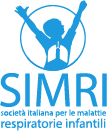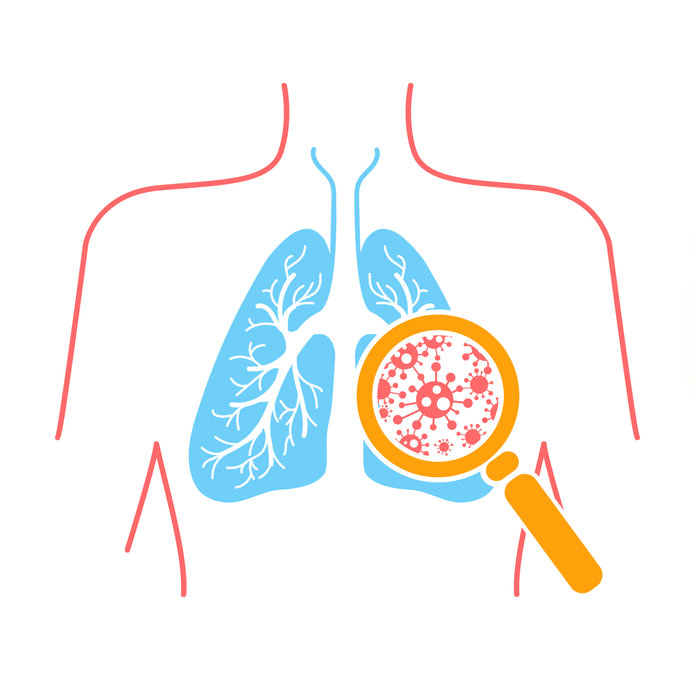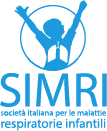Autore: Valentina Agnese Ferraro, MD PhD, UOSD Pneumologia e Allergologia Pediatrica, Dipartimento di Salute della Donna e del Bambino, Azienda Ospedale Università di Padova. Ultimo aggiornamento 2024
Primary (or Primitive) Ciliary Dyskinesia (PCD) is a rare genetic condition characterized by abnormalities of the cilia in the respiratory tract, leading to to impaired mucociliary clearance, and recurrent respiratory infections. About 80% of the cells lining the airways have mobile extensions called cilia (approximately 250 per cell). Their whip-like movement transports respiratory secretions—trapping viruses, bacteria, dust, and pollutants—toward the throat. This process, known as mucociliary clearance, is the body’s first line of defence against respiratory infections. Since this mechanism is impaired in PCD, mucus stagnates, causing recurrent respiratory infections starting from infancy.
Primary Ciliary Dyskinesia: What It Is and How It Manifests
- Symptoms of Primary Ciliary Dyskinesia in Children
PCD may be suspected in children presenting with at least two of the following symptoms:
- History of breathing difficulties within hours after birth, without an apparent cause;
- Persistent nasal congestion and mucus discharge from the first days of life;
- Daily wet (productive) cough from the early years of life;
- Abnormal positioning of internal organs (e.g., Situs Viscerum Inversus, where thoracic and abdominal organs are mirrored from their usual positions).
- Common Consequences of Primary Ciliary Dyskinesia
The above characteristics are included in a screening questionnaire called PICADAR, which helps objectively assess the likelihood of having this disease. The most frequent consequences of PCD include recurrent episodes of otitis media, bronchitis, and bronchopneumonia. Over time, repeated infections can lead to bronchiectasis (dilation of the bronchi), which further promotes mucus buildup and recurring infections. As children grow, nasal mucus retention may lead to chronic sinusitis involving all paranasal sinuses, often accompanied by nasal polyposis. Other consequences include infertility in males (due to immotile sperm) and an increased risk of ectopic pregnancies in females, due to ciliary dysfunction in the Fallopian tubes.
- Diagnosing Primary Ciliary Dyskinesia in Children. Nitric Oxide Measurement and Nasal or Bronchial Cell Sampling
There is no single definitive test for diagnosing PCD. A non-invasive screening test involves measuring nasal nitric oxide, typically found at very low levels in PCD patients. A more conclusive diagnostic test is the collection of nasal or bronchial mucosal cells using a cytology brush. Before performing nasal brushing, a saline rinse of the nasal cavities is essential to reduce mucus on the ciliated cells. The sample is then analysed through ultrastructural examination of the cilia using transmission electron microscopy to observe their internal structure in high detail. This test is often accompanied by high-speed video microscopy, which assesses ciliary beat frequency, pattern, and any morphological abnormalities. Finally, these exams are complemented by genetic testing, which identifies mutations responsible for PCD through next-generation sequencing (NGS) techniques.
- Treatments for Primary Ciliary Dyskinesia: How It Is Managed
Currently, there is no cure for PCD, but the frequency of infections can be reduced and complications slowed through medications and respiratory physiotherapy. Nasal irrigations with saline solutions should be done multiple times a day. Airway clearance physiotherapy, ideally twice daily and preceded by a bronchodilator, helps remove bronchial secretions. Regular aerobic physical activity also aids mucus clearance. Inhaled medications and antibiotics may be prescribed depending on the child’s clinical condition. For chronic infections with aggressive bacteria like Pseudomonas, inhaled antibiotics can be administered cyclically.
- Routine Check-Ups for Children with Primary Ciliary Dyskinesia
Children with PCD should attend clinical evaluations at a specialized centre at least twice a year. Periodically, they should undergo sputum or throat culture testing to detect bacterial infections and, if cooperative, perform lung function tests. An ENT (Ear-Nose-Throat) assessment with audiometry is recommended at least every two years. Radiological exams should only be performed when necessary to guide or modify treatment plans.
No metadata found.



